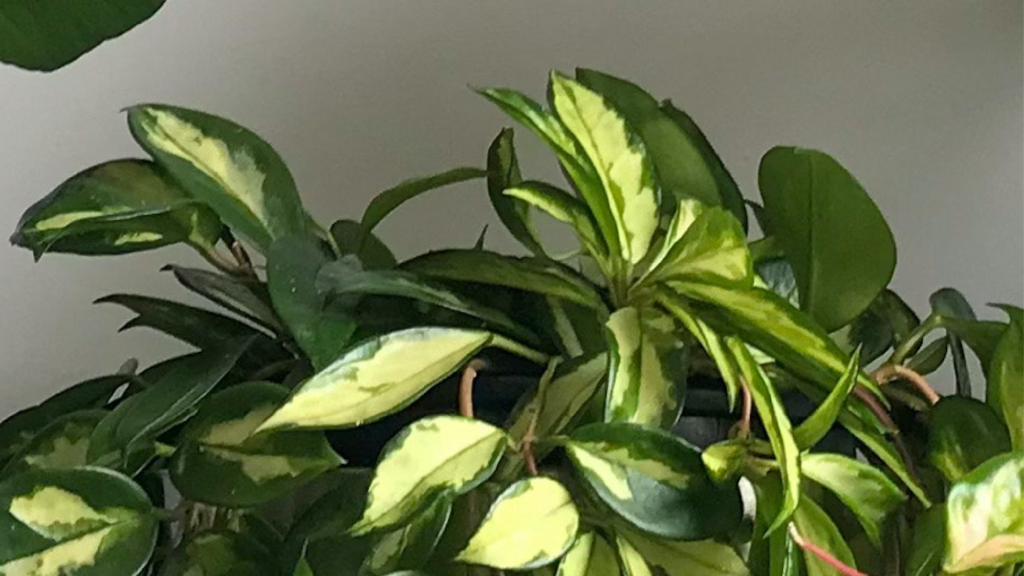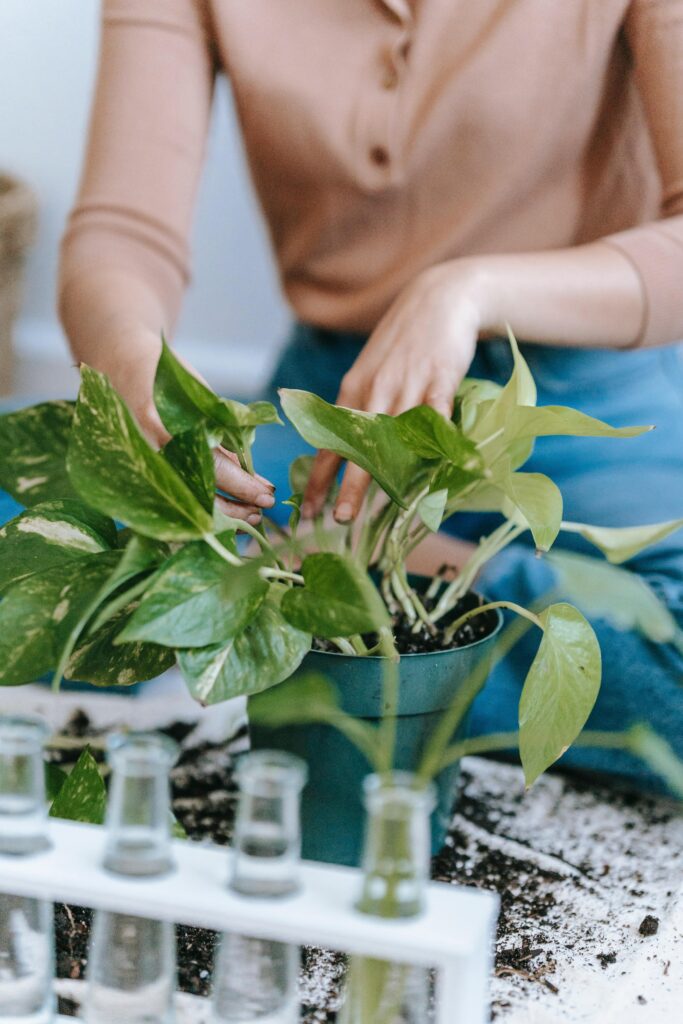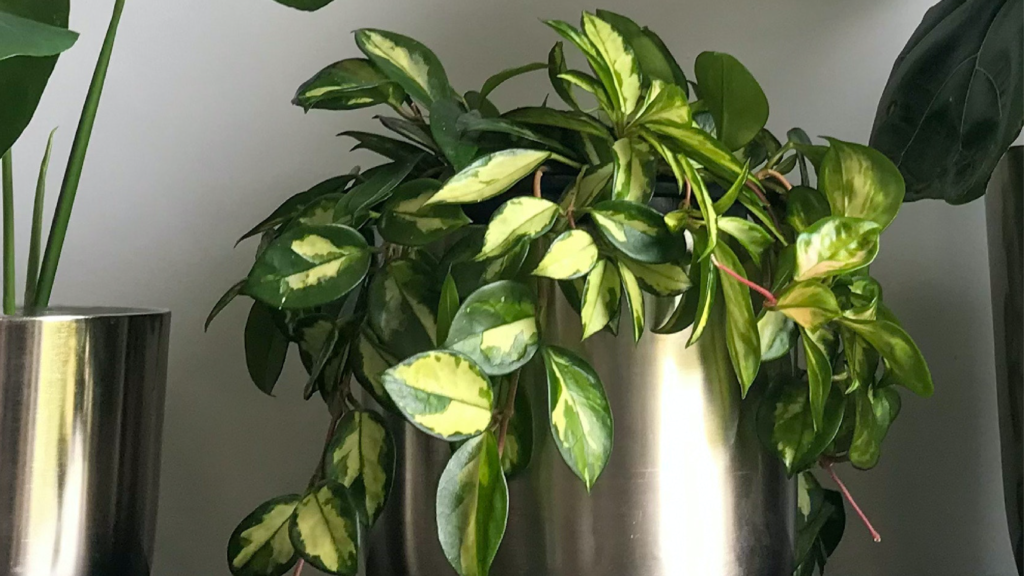Hoya Obovata, commonly known as the Wax Plant, is a beautiful and low-maintenance houseplant that has gained popularity among indoor plant enthusiasts.
Hoya Obovata with its glossy, waxy leaves and fragrant, star-shaped flowers, and a silver ‘splash’ pattern.
It is generally harder to find than the more common Hoya carnosa, but it is known to be a fast-growing variety. Hoya Obovata adds a touch of elegance to any living space.
Hoya Obovata belongs to the Asclepiadaceae family and is native to East Asia. The plant has thick, succulent leaves that are dark green and oval-shaped, giving it a unique appearance.
Its flowers bloom in clusters and are creamy-white with a pink or maroon center, giving off a pleasant fragrance that attracts pollinators such as bees and butterflies.
| Characteristic | Description |
|---|---|
| Scientific Name | Hoya Obovata |
| Common Name | Wax Plant, Hoya Obovata |
| Family | Apocynaceae (Dogbane family) |
| Origin | Southeast Asia, Australia |
| Type | Evergreen, vining succulent |
| Foliage | Oval-shaped, succulent leaves with waxy texture |
| Leaf Color | Dark green with prominent veining |
| Flowers | Clusters of star-shaped, fragrant flowers, typically pinkish-white with a red center |
| Fragrance | Sweet, pleasant fragrance from the flowers |
| Light Requirements | Bright, indirect light; can tolerate some direct sunlight |
| Watering | Allow soil to dry between waterings; avoid overwatering |
| Soil | Well-draining mix, such as orchid or succulent mix |
| Humidity | Prefers higher humidity but can adapt to average levels |
| Temperature | Average to warm temperatures; protect from drafts and cold extremes |
| Propagation | Stem cuttings, layering |
| Common Uses | Hanging baskets, indoor planters, or as a trailing vine |
| Special Features | Air-purifying qualities, low maintenance |
Selecting the Right Location
When it comes to growing Hoya Obovata, location is key. Choose a spot that receives bright, indirect light. Avoid placing it in direct sunlight, as it may scorch the leaves.
Indoor locations near east or west-facing windows are ideal, as they provide the right amount of light without exposing the plant to harsh rays.

The Perfect Soil Mix
For Hoya Obovata to thrive, it requires a well-draining soil mix that mimics its natural habitat. Create a blend of potting soil, perlite, and orchid bark.
This mixture ensures adequate drainage, preventing waterlogged roots that can lead to rot.
Watering with Care
One of the most crucial aspects of Hoya Obovata care is proper watering. As a succulent, it stores water in its leaves and stems, making it drought-tolerant.
Allow the soil to dry out partially between watering sessions. Overwatering can be detrimental, leading to root rot. Aim to strike a balance between keeping the soil moist and avoiding excessive watering.
Temperature and Humidity
Maintaining the right temperature and humidity levels is vital for the health of your Hoya Obovata.
This tropical plant thrives in temperatures between 60°F to 80°F (15°C to 27°C). Keep it away from cold drafts and sudden temperature fluctuations.
Regarding humidity, Hoya Obovata prefers higher levels, mimicking its native environment. If you live in a dry climate, consider using a humidifier or placing a water tray near the plant to increase humidity levels.
Fertilizing Tips
To encourage healthy growth and vibrant blooms, fertilize your Hoya Obovata during the growing season (spring and summer).
Use a balanced, water-soluble fertilizer diluted to half strength, and apply it once every two to four weeks. Avoid fertilizing during the dormant winter months.

Pruning for Optimal Growth
Pruning is essential for Hoya Obovata to maintain its shape and encourage new growth. Trim leggy or straggly stems to promote bushier growth.
Additionally, remove any yellow or damaged leaves to keep the plant healthy and aesthetically pleasing.
Propagation Techniques
If you wish to expand your Hoya Obovata collection or share it with friends, propagation is a simple and rewarding process. The most common method is propagation through stem cuttings.
Take a healthy cutting, remove any lower leaves, and place it in a moist, well-draining rooting medium. Within a few weeks, roots should develop, and you’ll have a new Hoya Obovata plant.
Types of Hoya Obovata
Hoya Obovata is a popular and attractive species of Hoya, known for its oval-shaped leaves and cascading growth habit.
While there may not be numerous recognized cultivars of Hoya Obovata as compared to some other Hoyas, variations in leaf size, color, and variegation may exist.
Here are some notable types and variations of Hoya Obovata:
Hoya Obovata:
Characteristics: The standard Hoya Obovata features large, glossy, oval leaves with a deep green color and prominent veins. It produces clusters of fragrant, star-shaped flowers.
Hoya obovata ‘Splash:
Characteristics: Some specimens of Hoya Obovata may exhibit “splash” patterns, which are random variations in leaf color or variegation. This can include lighter spots or streaks on the leaves.
Hoya obovata ‘Variegata’:
Characteristics: Variegated forms of Hoya Obovata have leaves with different shades, often featuring lighter or cream-colored variegation. These variations can add visual interest to the plant.
Hoya obovata ‘Silver Splash’:
Characteristics: This variation may have silver or silvery-white speckles or streaks on the leaves, creating a distinctive and visually appealing look.
Hoya obovata ‘Ruby Sue’:
Characteristics: ‘Ruby Sue’ is a variation that may have a reddish or burgundy tint to the new leaves, adding an extra element of color to the plant.
How to Get Hoya Obovata to Bloom
The Hoya Obovata produces stunning star-shaped flowers once it reach maturity. The blooms are long-lasting and emit a sweet fragrance, making it a favorite among flower enthusiasts.
Common Pests and Problems
Though generally hardy, Hoya Obovata may face some issues related to pests and diseases.
Keep an eye out for mealybugs, spider mites, and aphids, as they are common pests that can affect this plant. If infestations occur, treat them promptly with neem oil or insecticidal soap.
| Attention: Hoya obovata is an attractive plant that can thrive indoors with the proper care and attention. |
Conclusion
Growing Hoya Obovata can be a fulfilling and rewarding experience, thanks to its unique characteristics and relatively low-maintenance needs.
You are now equipped with the knowledge needed to cultivate a thriving Hoya Obovata in your indoor garden.
Remember to provide it with the right amount of light, well-draining soil, and balanced watering. Prune when necessary, and watch out for pests and diseases.
With a little care and attention, your Hoya Obovata will grace your home with its lush foliage and beautiful blooms.
FAQs
1. Is Hoya Obovata suitable for beginners?
Absolutely! Hoya Obovata is a resilient plant that can withstand some neglect, making it an excellent choice for beginners.
2. How often should I water my Hoya Obovata during winter?
Reduce watering during winter and only water when the top inch of the soil is dry.
3. Can Hoya Obovata tolerate low light conditions?
While it prefers bright, indirect light, it can tolerate low light conditions for short periods.
4. What is the best time to propagate Hoya Obovata?
Spring and early summer are the ideal times to propagate Hoya Obovata, as it’s during its active growth phase.
5. Does Hoya Obovata require pruning?
Yes, regular pruning is essential to maintain the plant’s shape and encourage healthy growth.

